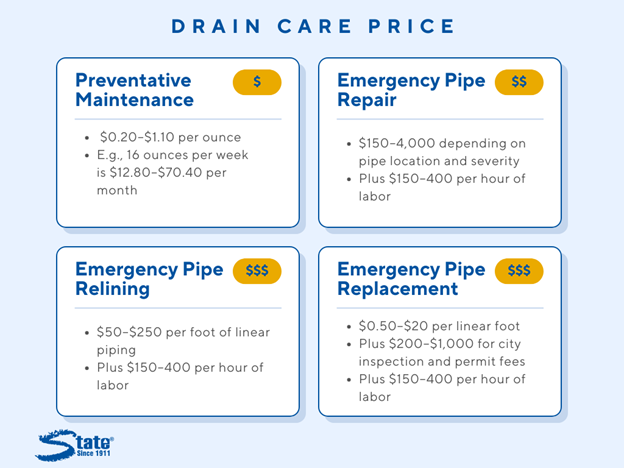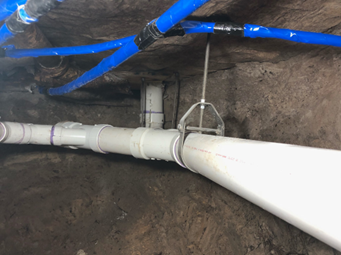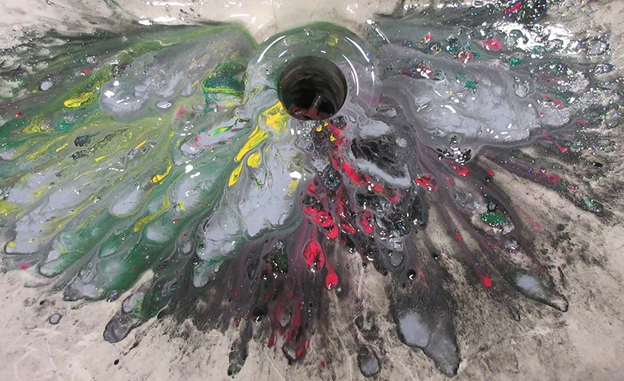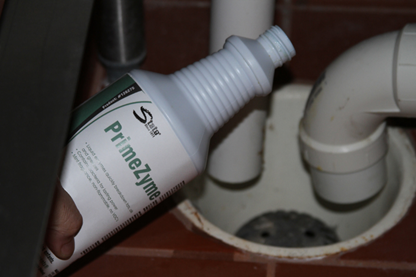Cost Comparison: Emergency Plumber vs. Preventative Drain Maintenance

Cost Comparison: Emergency Plumber vs. Preventative Drain Maintenance
It can be tempting to just deal with drain problems when they arise rather than invest in preventative maintenance. After all, how do you know there’s an issue in your drain if you don’t see one? But if you wait until a serious problem appears, the truth is that an emergency plumber costs more than preventative drain maintenance.
State Chemical has provided chemical solutions, such as drain maintainers, to businesses since 1911. We’ve seen a wide range of situations and what it costs businesses to treat drains reactively rather than proactively.
To give you an understanding of what an emergency plumber will cost as compared to regular preventative drain maintenance, we’ve taken the time to lay out standard industry pricing. After reading, you’ll know the cost difference between emergency plumbers and preventative drain maintenance so that you can make the most cost-effective decision for your facility.
When Do You Call an Emergency Plumber?
What might it look like when you need an emergency plumber?
Some possibilities include overflowing sinks, bursting pipes, and corrosion, all of which may be caused by age as well as a buildup of fats, oils, and greases (FOGs) and other organics.
Every time you wash your hands, for example, your body oil and soap scum go down the drain, clinging to the sides of your pipes like buildup in an artery. Just imagine the same buildup from food debris and grease when your staff does the dishes. Slowly but surely, this will build into a clog.
A standard clog doesn’t need to be an issue for an emergency plumber on its own. If you just have a simple clog, a drain snake or drain opener should be able to do the job. The problem arises when this kind of buildup is collected over years and years.
Maybe you deal with clogs each time they arise without a hitch. But clogs can’t always be reached from the drain opening. Plus, if you use a drain snake, it’s likely that “fixing” clogs has pushed the buildup further down the drain, eventually creating a hard-to-reach clog.
If this goes on for long enough, with water still barely managing a way through, your clog can get so long and condensed that even a drain opener can’t burn through it.
This is when you need an emergency plumber.
These kinds of clogs will completely stop your water flow and may rot your pipes if left untreated. By that point, you’ll need a plumber to drill into the line just to remove the clog, and if your pipes leak or rot, you’ll be looking at pipe repair and replacement, which will be destructive to your facility. This can only worsen based on the location of the problem (e.g., lines under floors are harder to fix than unconcealed lines).
How Much Does an Emergency Plumber Cost?
This kind of damage is time-sensitive or else it will only worsen, so an emergency plumber is essential as compared to a usual plumber. Unfortunately, emergency plumbing tends to be more expensive than standard plumbing.
To consider price, you’ll first need to factor in labor fees, which are significantly higher than with standard plumbing jobs. An emergency plumber will be around $150–400 per hour (compared to standard plumbing costs at $50–$120 per hour).
Then, you’ll have to consider the price of materials. Depending on the severity of your pipe damage, your options are pipe repair, pipe relining, or pipe replacement.
For a standard repair, like fixing a leak or removing a clog, it will cost $150–4,000, depending on both severity and how accessible the pipe is.
Meanwhile, if you choose to reline your pipe, it will cost $50–$250 per foot of linear piping. So, the materials to reline a 25-foot section of piping, for example, will cost $1,250–6,250.
Pipe replacement is usually the most expensive option of the three depending on how much piping needs to be replaced. However, it will often be your only choice in severe circumstances. Pipe replacement costs $0.50–$20 per linear foot depending on what material you use. With pipe replacement, you’ll also need to pay a city inspection fee ($100–$500) and a permit fee ($100–$500).
Let’s imagine again that you need to replace 25 feet of piping. Without labor fees, a replacement will cost you $212.50–$1,500. In these situations, pipe replacement is actually cheaper than pipe relining. However, with labor fees, the more piping you need to fix, the more replacement will cost compared to relining.
This is a lot of math to break down, so let’s dive into a hypothetical scenario:
You’re the building manager for a college’s visual arts building. Dozens of classes are held every day, including woodworking, painting, and sculpting classes. Over the years, your facility has not used a drain maintainer, so the drains fill with wood shavings, oil paint, and clay. The drains start slowing down for a while, but one day, your phone starts blowing up with calls: the entire building’s drains are backing up, and smelly water is spilling all over the floor.
Naturally, you call an emergency plumber, and you find out that the drain line is severely backed up to the point that drain snakes and drain openers are ineffective. Not only do you require pipe replacement, but the problem area runs directly under the main campus walkway. What will this cost you?
The plumber informs you that 40 feet of piping need to be replaced ($20–$800) and that it will take 40 hours to replace ($6,000–$16,000). With inspection and permit fees, this job totals out to $6,220–$17,800. And you’ll need to factor in the cost of repairing the walkway, relocating classes in the building for at least a week, and lost business since the repairs will block off routes to campus dining.
As you can see, repair costs add up quickly, and once there’s a problem, replacements will be invasive and destructive to your property.
When Do You Use Preventative Drain Maintenance?
Over time, not using preventative maintenance is incredibly destructive to your drain, but when should you use preventative drain maintenance?
The answer is always. Preventative maintenance shouldn’t hurt your pipes if you aren’t using harsh chemicals, so your drains can always benefit from being looked after.
If your drain sees a lot of FOG buildup, for example, you’ll want preventative maintenance to break up the FOGs and organics before they cause clogs and other issues, as seen in the visual arts building example. However, even if your building doesn’t see an excessive amount of FOGs, FOGs will still build up in the drains over time, necessitating reactive maintenance.
Additionally, even if your drain is infrequently used, preventative maintenance for dry drains will benefit you. When drains are not consistently used, they do not continuously have the required amount of water, meaning that sewer gases may waft up from the drains since there is no water to seal off the odors. In these cases, you’ll want to use a special drain maintainer for dry drains to slow water evaporation and stop these odors from occurring.
Essentially, if you have a drain, you can use a drain maintainer. You don’t have to use one, but you’re always choosing between preventative and reactive maintenance with drains. And with preventative maintenance, you’re saving yourself money and time in the long run.
How Much Does Preventative Drain Maintenance Cost?
With this, how much will preventative drain maintenance cost?
It depends on which specific product you use and how much you use at once, but generally, drain maintainers cost $0.20–$1.10 per ounce. If you use 16 ounces a week, it will cost you $12.80–$70.40 per month and $153.60–$844.80 per year.
The amount you use will vary according to your facility’s needs, and the price will vary depending on the product chosen, but in any case, this is significantly cheaper than the major repairs you’d seek out from an emergency plumber.
In Sum: Preventative Drain Maintenance Saves Your Wallet in the Long Run
It’s hard to spend money on an issue you don’t see, but the cost of not doing preventative maintenance adds up in the eventual expense of an emergency plumber. You now know what an emergency plumber could cost your facility, so to avoid these down-the-line expenses, consider the cost of a drain maintenance contract with State Chemical.












